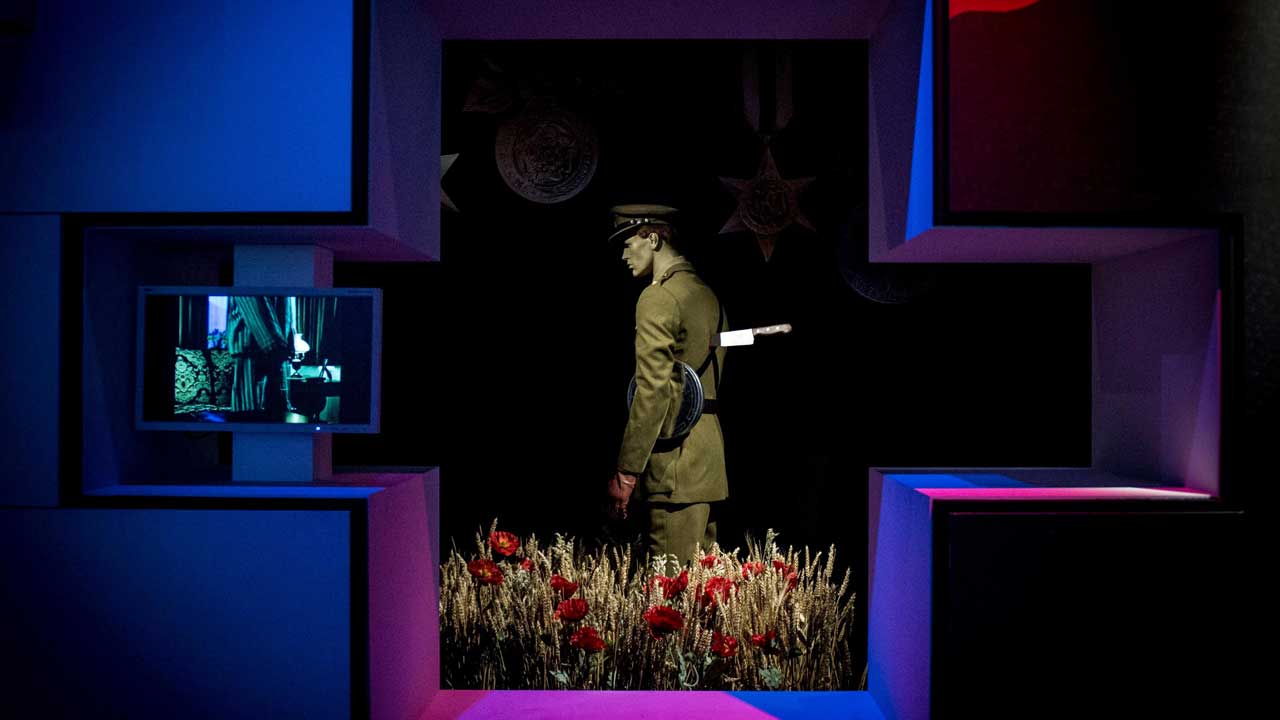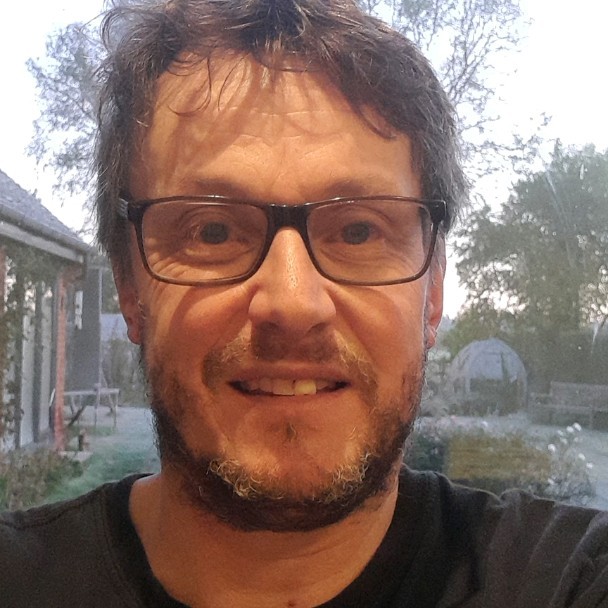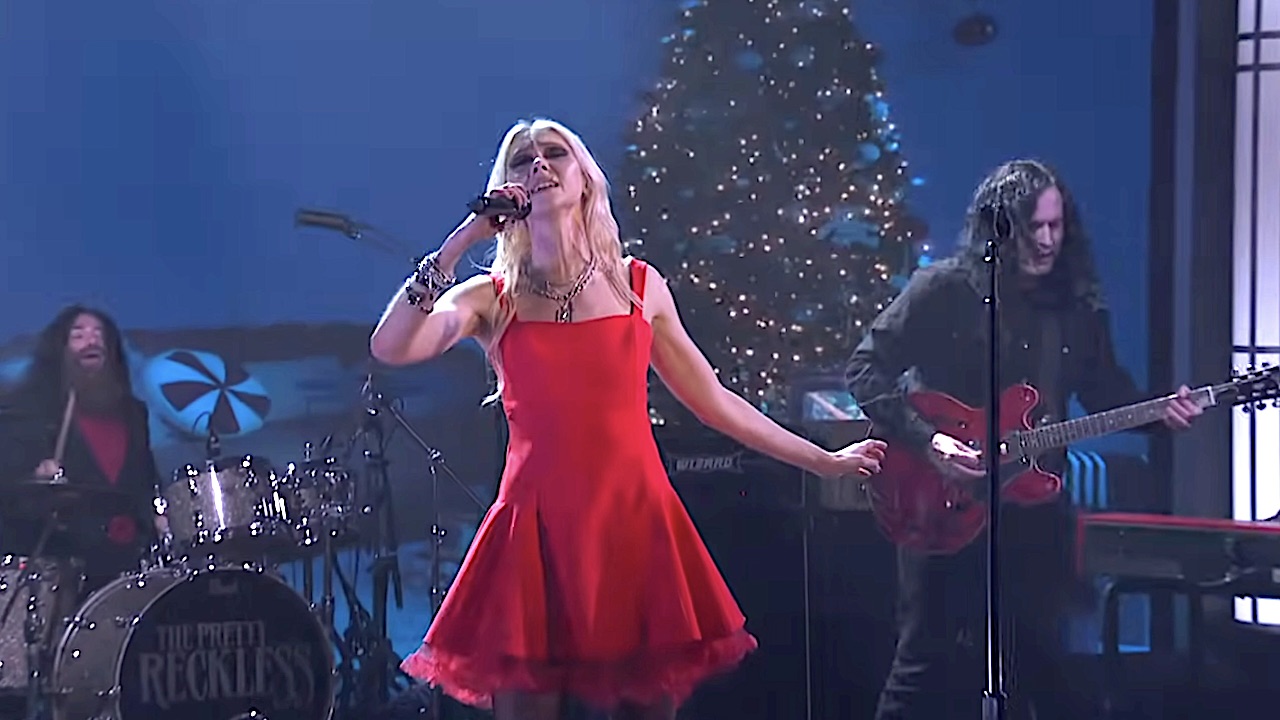The Final Cut by Pink Floyd explored themes of loss, disillusionment, and the human cost of conflict: It was also popular with chickens
20 things you didn't know about Pink Floyd's The Final Cut

Roger Waters’ last album with Pink Floyd was released more than 40 years ago, in March 1983. Created in an atmosphere of tension and suspicion, it is also one of the band’s most overlooked albums.
Below, Glenn Povey – the creator of Pink Floyd fanzine and website Brain Damage – tells you everything you need to know about "the album that ended Floyd".

1. The front cover shows a Remembrance Day poppy and selection of British Second World War medal ribbons including the Distinguished Flying Cross (white with diagonal purple stripes), The 1939-45 Star (equal stripes of dark blue, red and light blue), The Africa Star (sand with dark blue, red and light blue stripes), and the Defence Medal (orange with wide green edges bearing narrow black stripes).
2. Two versions of the track Not Now John were recorded, with one version obliterating the words “fuck all that” with an overdub of “stuff all that” for the single release to ensure radio play.
3. The word “fuck” occurs in the song Not Now John six times as part of the phrase, "fuck all that"; and once again near the end the song as part of the "Where’s-the-bar?" lyric, which is sung in Italian, Greek, French and finally English as, "Oi — Where’s the fucking bar, John?"
4. Collectors were quick to discover the B-Side of Not Now John: The Hero’s Return (Part 2), is essentially an additional verse to the song, but is absent from the album. It has never been released in any other form.
5. The Final Cut was dedicated to Waters’ late father Eric Fletcher Waters who was a second lieutenant of the Royal Fusiliers, who perished during the ill-fated Anzio campaign in Italy in the early part of 1944. Eric was a devout Christian and Communist Party member who had been a conscientious objector. His experiences driving an ambulance during the Blitz changed his opinions and he joined the British Army. He was killed when Roger was five months old.
Sign up below to get the latest from Classic Rock, plus exclusive special offers, direct to your inbox!
6. The album opens with The Post War Dream which is identical in melody to the 1971 song Sam Stone by John Prine, about a drug-addicted Vietnam veteran.
7. David Gilmour objected so vehemently to Pink Floyd becoming a vehicle for Water’s criticism of Government policy that he resigned from the production process leaving Michael Kamen and James Guthrie to the task.
8. The chorus to Your Possible Pasts was written by Waters as far back as 1968, in an unreleased song called Incarceration Of A Flower Child. It was recorded by Marianne Faithful for her album Vagabond Ways in 1999, but the lyric was first heard in the scene from The Wall feature film where Pink is huddled in a toilet cubicle babbling to himself prior to the track Stop.
9. When The Tigers Broke Free was originally recorded for the feature film The Wall, and was released as a single bearing the footnote, "taken from the album The Final Cut", although it didn’t appear on the album until 2004 when it was inserted into the CD reissue.
10. The powerful tenor Saxophone on The Gunner’s Dream was provided by Raphael Ravenscroft who is best known for his work with Gerry Rafferty, performing the saxophone solo on Baker Street.
11. Roger Waters employed Zuccarelli Sound Labs for the album, whose holophonic acoustics enabled him to create various 360-degree sound effects. The idea of holophonics was revisited by Waters for his 1984 Pros And Cons of Hitch-Hiking solo album and a radio broadcast of his solo show from Radio City Music Hall in New York on 28 March 1985.
12. The Final Cut was recorded in eight studios across Britain, from July to December 1982 including The Billiard Room, which was quite literally the billiard room in Roger Waters’ house!
13. Obviously bored by his repeated vocal takes, Waters noticed co-producer Michael Kamen writing furiously on a notepad in the control room. Losing his temper, he demanded to know what Kamen was doing, only to find that he’d been filling pages and pages with the words "I Must Not Fuck Sheep"! Kamen had become so traumatised by the recording that he thought it must be payback for some sort of unholy crime he’d committed in a past life.
14. The album’s release was accompanied by a short video film comprising four songs from the album produced by Waters and directed by his then brother-in-law Willie Christie. Waters is shown in conversation with a psychiatrist named A. Parker-Marshall (a reference to Pink Floyd The Wall film director Alan Parker and producer Alan Marshall), and Alex McAvoy, portrayed as a war veteran who appeared as the teacher in the film.
15. It is the only Pink Floyd album on which Roger Waters is credited for the writing and composition of every song. All of the lyrics are sung by Waters with the exception of Not Now John by David Gilmour. Indeed the album is subtitled A Requiem For The Post War Dream, by Roger Waters, performed by Pink Floyd.
16. The Final Cut was originally planned as the soundtrack album to the film Pink Floyd The Wall, under the working title Spare Bricks and featuring new music and songs re-recorded for the film including When The Tigers Broke Free, Mother and What Shall We Do Now? among others.
17. The aircraft featured on the album were Tornado jets recorded by Nick Mason at their base at RAF Honington in Warwickshire, and the propeller aircraft by a friend who flew Avro Shackleton’s for the RAF’s maritime patrol.
18. Pink Floyd have never performed live any of the tracks from The Final Cut. However Roger Waters has regularly performed the tracks The Gunners Dream, Get Your Filthy Hands Off My Desert, The Fletcher Memorial Home, Southampton Dock and Not Now John on his solo tours.
19. Co-producer Michael Kamen was a prolific arranger and composer having previously arranged the orchestrations for The Wall album and film soundtrack. He went on to perform with Roger Waters on his 1984 tour, his rendition of The Wall in Berlin in 1990, Pink Floyd at Knebworth in 1990 and David Gilmour in 2002. Among his other works are the orchestrations for Who Wants To Live Forever by Queen, Here Comes The Rain Again by the Eurythmics as well as the scores for many feature films including Highlander, X-Men, Robin Hood: Prince of Thieves and the TV series Band of Brothers.
20. In Steven Kotler’s Surfing, Science and the Origins of Belief (2006), the author details studies conducted by Jack Panksepp, head of affective neuroscience research at the Chicago Institute for Neurosurgery and Neuroresearch. Panksepp was researching the similarity of emotional experiences that occur while listening to music to those experienced by runners during the so-called ‘runner’s high’. To that end, he played dozens of records by various artists to chickens he had attached to equipment that recorded their responses. The chickens’ favourite? The Final Cut. Cows, meanwhile, prefer Simon & Garfunkel.)

